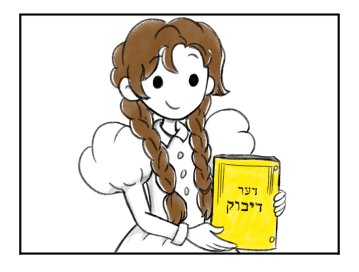
S. An-ski and Der Dibek
Der Dibek: Tsvishn Tsvey Veltn (The Dybbuk: Between Two Worlds) by S. An-ski is one of the most well-known plays of the Yiddish theater. The subtitle, “Between Two Worlds”, refers to the play’s treatment of the space between life and death, and also hints at its own liminal position between modern European and traditional Jewish culture.
S. An-ski was the pseudonym of Shloyme-Zanvl Rapoport (1863–1920), who grew up in Vitebsk, in today’s Belarus. An-Ski was a writer, an ethnographer, and a revolutionary, and was also known for authoring “Di Shvue” (“The Oath”), which became the anthem of the Jewish Labor Bund. He was among the first serious collectors of Jewish folklore, and he organized an ethnographic expedition in small towns throughout the Ukraine, recording Jewish folktales, traditions, and songs, and gathering hundreds of photographs and religious items.
In his play Der Dibek, An-ski drew on this rich folkloric material and incorporated various details from everyday shtetl life, from the concrete to the esoteric. Folk beliefs about death are particularly well represented in the play, especially in the motif of the dybbuk: a restless soul of someone who has died that inhabits a living person.
The protagonists of the play, as Nomi explains to Moby in our movie, are Leah and Khonen, who fall in love but cannot marry. Leah is a young woman from a wealthy family, and Khonen is a poor yeshiva student. Leah’s father arranges for Leah to marry into an even wealthier family and Khonen, seeking to put a stop to the impending marriage, attempts to bring kabbalistic forces to his aid, but his efforts prove fatal. His spirit returns in the form of a dybbuk, sparking a struggle of supernatural dimensions.
An-ski tried for years to bring Der Dibek to the stage, to no avail. However, after his death, the play became a sudden and unexpected success after its debut performance in Warsaw. The play was soon performed in Yiddish theaters throughout Poland, and was eventually translated into nearly a dozen languages for performances around the world. In Poland, in 1937, the play was adapted to film, and Der Dibek became one of the best known Yiddish movies.
Although traditional Jewish customs and folk beliefs play a significant role in Der Dibek, its structure is typical of modern European drama, and its theme of two star-crossed lovers is universal. In merging these disparate elements, An-ski managed to create a masterpiece that is both traditionally Jewish and highly modern.
Resources
The play Der Dibek can be found in the digital library of the National Yiddish Book Center, in An-ski’s Gezamlte Shriftn (1928), vol. 2.
The 1937 film can be obtained from The National Center for Jewish Film.
An English translation of the play can be found in each of the following anthologies:
The Dybbuk and Other Writings by S. Ansky, edited and with an introduction by David G. Roskies; translations by Golda Werman.
The Dybbuk and the Yiddish Imagination : A Haunted Reader, edited and translated from the Yiddish by Joachim Neugroschel.
